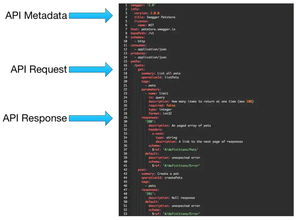Content:
Fishing, an ancient pastime that has stood the test of time, is not just about relaxation and tranquility; it's also a skill that requires patience, practice, and precision. One of the most crucial aspects of fishing is learning how to lift your fishing rod effectively. The right technique can make the difference between a successful catch and a frustrating day on the water. In this comprehensive guide, we will delve into the intricacies of how to lift your fishing rod the best way possible.
Understanding the Fishing Rod
Before we dive into the technique, it's essential to understand the components of a fishing rod. A typical fishing rod consists of the following parts:
- Handle: The part you hold in your hand.
- Guides: Small rings that help guide the line through the rod.
- Blank: The main part of the rod that runs from the handle to the tip.
- Tip: The flexible end of the rod that bends when a fish takes the bait.
The Importance of Proper Lifting Technique
The way you lift your fishing rod can significantly impact your fishing experience. Here are some reasons why it's crucial to master the art of lifting:

- Preventing Line Tangles: Improper lifting can cause the line to twist or tangle, which can be a nightmare to untangle and can lead to lost fish.
- Maintaining Line Tension: The right lifting technique helps maintain consistent line tension, which is essential for detecting subtle bites and setting the hook effectively.
- Reducing Arm Fatigue: Using the right technique can help you fish for longer periods without tiring your arms.
The Best Way to Lift Your Fishing Rod
Now that we understand the importance of proper lifting technique, let's explore how to do it:
Grip the Handle Firmly: Hold the handle with a firm but comfortable grip. Avoid squeezing too tightly, as this can lead to arm fatigue.
Position the Rod at a 45-Degree Angle: Angle the rod at about 45 degrees to the water's surface. This position allows you to maintain control over the line while minimizing the risk of tangles.
Use a Wrist and Arm Motion: Instead of using your whole arm, focus on using your wrist and arm to lift the rod. This motion is more fluid and less likely to cause line twists.
Lift with a Gentle Curve: When lifting the rod, do so with a gentle curve. Avoid straightening the rod all the way, as this can put unnecessary stress on the rod and the line.
Keep the Line Taut: As you lift the rod, keep the line taut but not too tight. This allows you to feel the weight of the fish and react quickly.
Adjust Your Position: If you're fishing from a boat or a wading platform, adjust your position to ensure you can lift the rod without straining your back or shoulders.
Practice Makes Perfect: Like any skill, lifting your fishing rod effectively takes practice. Spend time on the water, experimenting with different techniques until you find what works best for you.
Advanced Techniques
Once you've mastered the basic lifting technique, you can explore some advanced methods:
One-Handed Lift: For some anglers, using only one hand to lift the rod can be more comfortable and efficient. Practice this technique by lifting the rod with just your dominant hand.
Snap Lift: This technique involves lifting the rod quickly and sharply to set the hook. It's particularly useful when fishing with lures that require a quick strike.
Roll Cast: The roll cast is a great technique for casting short distances without the need for a backcast. It involves rolling the line off the rod tip with your wrist and arm.
Conclusion
Lifting your fishing rod may seem like a simple task, but it plays a vital role in your fishing success. By understanding the components of the rod, mastering the proper lifting technique, and practicing regularly, you'll be well on your way to becoming a more skilled angler. Remember, the best way to lift your fishing rod is the one that feels most comfortable and natural to you. Happy fishing!












